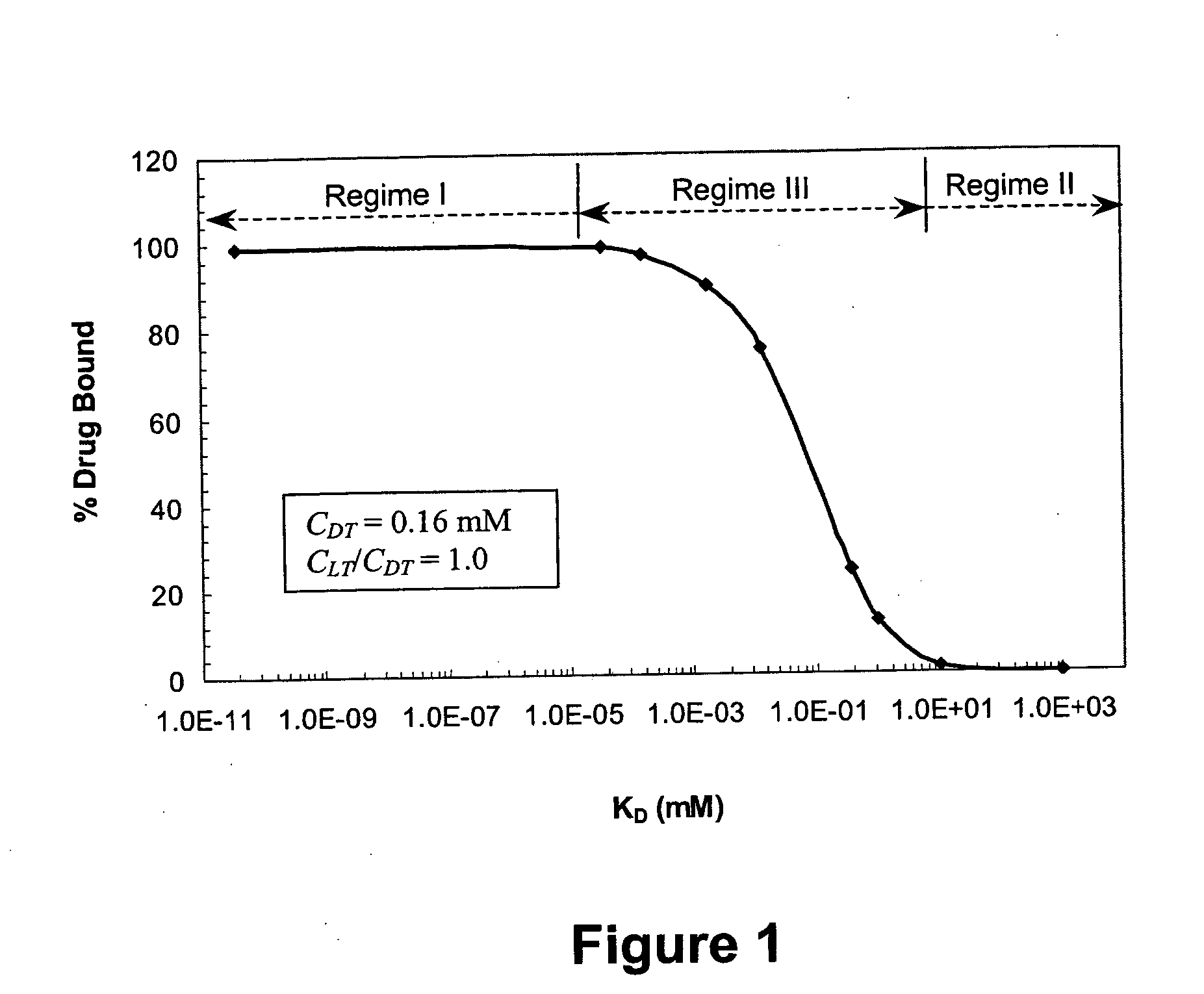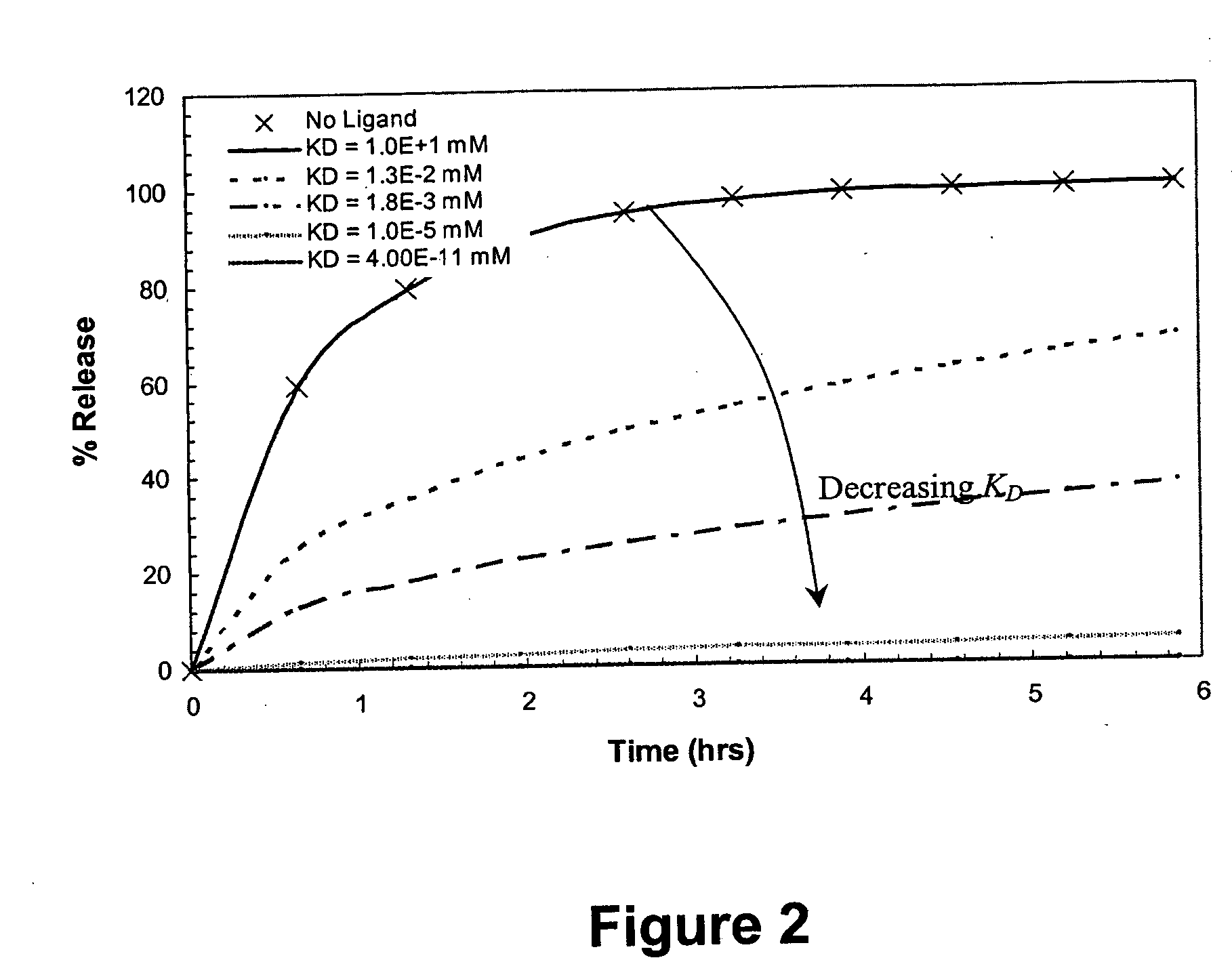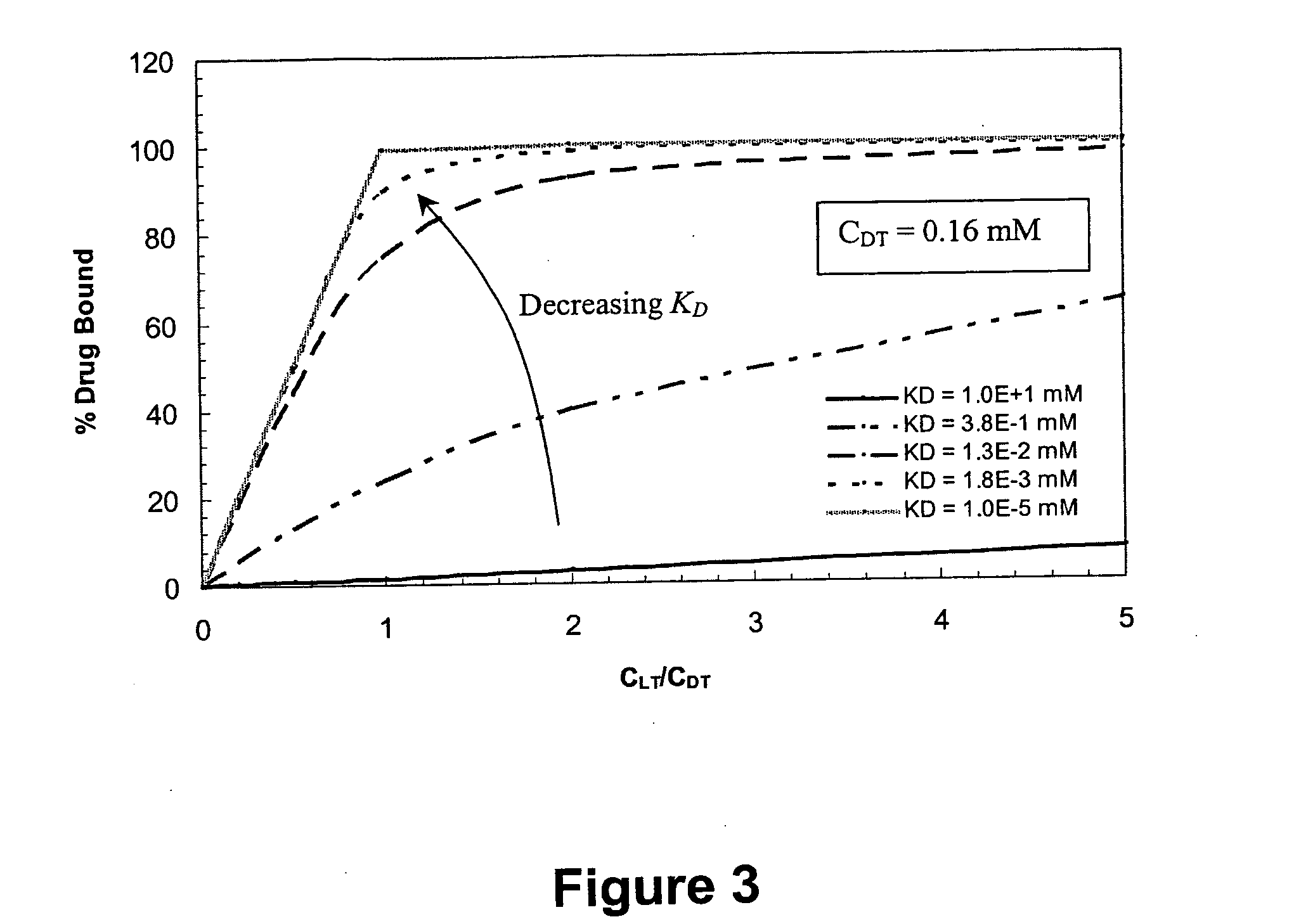Ligand-mediated controlled drug delivery
a technology of ligands and controlled drugs, applied in the direction of capsule delivery, prosthesis, microcapsules, etc., can solve the problems of limited usefulness of existing matrix delivery systems in achieving slow and controlled release of loaded materials, biological activity, and difficult to overcome the formation of viable polymeric systems for many types of agents, so as to increase the drug release efficiency of the agent from the system
- Summary
- Abstract
- Description
- Claims
- Application Information
AI Technical Summary
Benefits of technology
Problems solved by technology
Method used
Image
Examples
example 1
[0095] Two macromolecular solutes, bovine serum albumin (BSA) and immunoglobulin G (IgG), were released from PEG 3400 DA (di-acrylated poly(ethylene glycol)) gels fabricated under identical conditions. The gels were formed by polymerization of a 10 wt % PEG 3400 DA solution in buffer. Once equilibrated in a large excess of buffer, the volumetric swelling ratios of the polymerized release matrices were observed to remain identical in all the cases indicating no degradation. The mesh size of the gels was estimated to be 140 Å based on the average measured mass swelling ratios of the gels (Qm=13.2±1.7).
[0096] Both BSA and IgG protein molecules chosen were smaller than the mesh size of the 10 wt % PEG 3400 DA gels and, thus, were expected to readily diffuse out of the hydrogel driven by a concentration gradient. The method of release of protein in this example was thus diffusion controlled and depended solely on the relative sizes of the network mesh (ξ) and encapsulated protein molecu...
example 2
[0101] Release studies described in Example 1 were extended by copolymerizing 2-methacryloaminohistidine (MAH) into the 10% PEG 3400 DA gels of Example 1 to investigate ligand-drug binding effects on release rates of BSA and IgG. FIG. 10 shows the cumulative release percentage of IgG from a hydrogel (5 wt % drug loading) incorporated with MAH at ligand-drug molar ratios of (A) 0.0 (B) 0.5 and (C) 2.0. Incomplete release profiles observed in this study were again attributed to side reactions involving the protein during hydrogel formation. As can be seen, IgG was released fastest from the MAH-free hydrogel, with the release becoming slower as the ligand-drug molar ratio increased. The release in the first case was controlled only by diffusion while release profiles in the second and third cases was governed by both (i) ligand-drug reversible interaction and (ii) subsequent diffusion of free IgG. (For the current example, it was assumed that after interaction with MAH, IgG was release...
example 3
[0104] Experiments were also performed to check the specificity of MAH towards IgG. Release experiments were performed in a manner similar to those described in Example 2 but with IgG replaced by BSA. FIG. 12 shows the release profiles for BSA from hydrogels functionalized with MAH at ligand-drug ratios of 0.0, 0.5 and 2.0.
[0105] Incomplete release of the drug was observed again, which was attributed to side reactions within the network. However, the presence of MAH did not affect the release rates of BSA significantly. The histidine tag on MAH exhibited affinity only to the Fc fragment of IgG and was hypothesized to remain inert or non-adhesive to BSA. Thus, the presence of MAH did not affect the release of BSA from the ligand-incorporated PEG gels. The release here was once again controlled only by diffusion, and the release rates were dependant on the relative sizes of drug and the network mesh.
PUM
| Property | Measurement | Unit |
|---|---|---|
| dissociation constant | aaaaa | aaaaa |
| dissociation constant | aaaaa | aaaaa |
| dissociation constant | aaaaa | aaaaa |
Abstract
Description
Claims
Application Information
 Login to View More
Login to View More - R&D
- Intellectual Property
- Life Sciences
- Materials
- Tech Scout
- Unparalleled Data Quality
- Higher Quality Content
- 60% Fewer Hallucinations
Browse by: Latest US Patents, China's latest patents, Technical Efficacy Thesaurus, Application Domain, Technology Topic, Popular Technical Reports.
© 2025 PatSnap. All rights reserved.Legal|Privacy policy|Modern Slavery Act Transparency Statement|Sitemap|About US| Contact US: help@patsnap.com



